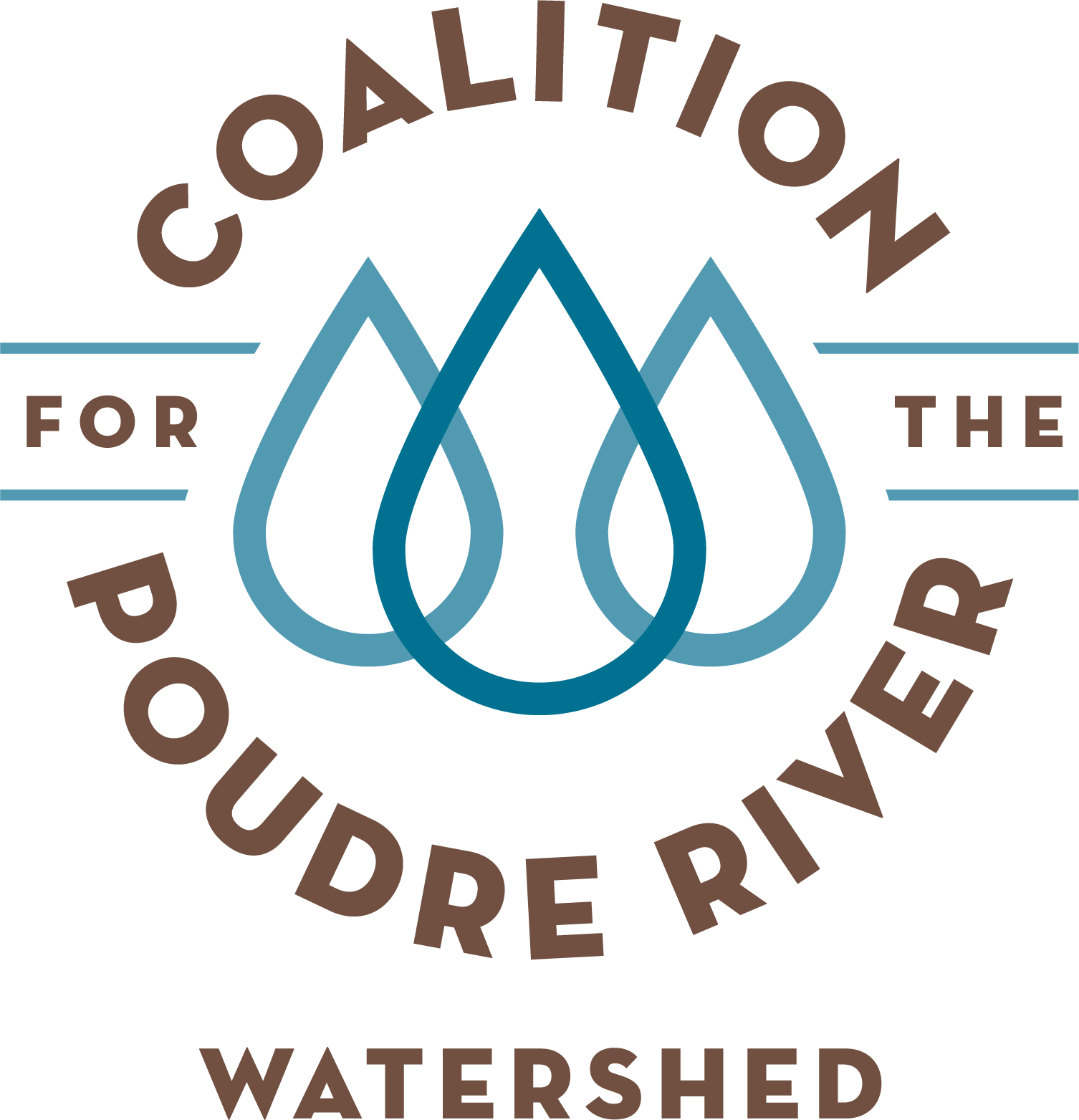Guest Blog: Let's all pretend we are water droplets! A hydrologic journey through the Poudre River Watershed
by Colin Barry, Geomorphologist, Ayres Associates
This blog was adapted from a speech that Colin gave at our recent Take Me to the River fundraiser on June 20 at the Hillside Vineyard. Thank you for your time and creativity, Colin!
Upper Elkhorn Creek post-fire restoration project designed by Ayres Associates and implemented in partnership with CPRW and the USFS, North Fork of the Cache la Poudre River Watershed (Photo courtesy of BEAVS Research Group/Emily Fairfax)
I am a geomorphologist, which means I study landscape and form on the Earth’s surface. The biggest shaper of the earth’s surface is water. So, we are going to play pretend. Let’s all pretend we are water droplets. Take a breath. Here we all are together, collecting in clouds along the high plains and then smack into mountains. We climb up, up, up and cool off before falling as rain during a high intensity thunderstorm event. Now, imagine your special place in the Poudre River Watershed. Maybe it’s a small tributary west of Red Feather, maybe you’re a daredevil water droplet and you fall on a hillslope adjacent to the Big South. Wherever you land, in the mountains, you will be very busy very quickly! You’re meeting up with friends, consolidating into tiny rills, and then into larger gullies. Together, you do work on the landscape to increase the efficiency of your flow. You eventually land in a confined, cascading stream and here, all together, we create a thread. The threads of our Poudre River necklace are places of chaos and energy. Our only path is down! We are falling as much as we are flowing. The thread is long and, despite our amazing comradery, I am ready for a break. Luckily, the ridgelines on either side are dipping and we are entering a new reach.
Over geologic time, this portion of the necklace has widened as water exploits a geologic weakness. This increase in active stream width reduces the system’s kinetic energy and increases physical complexity. Our busy band of water droplets has arrived in a place of opportunity. Because flow is a balance of velocity and flow area, more space means less energy to carry our baggage, so we drop it. We deposit mid-channel bars and aggrade on the overbanks. Our friends over here (wave hands!) take a secondary channel to the left, you slow down even further a drop off of more fine-grained sediment. A subset of you infiltrates into the riparian soils and supports woody vegetation on the flow margins. While you all up get held up within a log jam, filling in the main channel, pushing these folks next to you onto the overbank to fill a depression and sustain wetland species. You all in the back - and I can tell from here are so impatient - jump on the back roads into the hyporheic zone. Like drivers filling every parallel street in Idaho Springs during a Sunday evening back to Denver, you saturate this space exchanging nitrogen and nutrients as you realize you should have just stayed on the highway. Beads are a mess of opportunity and disturbance that supports diversity and ecological function. That diversity and function is key to a common, but ambiguous term we often throw around - “resiliency” - the ability of a landscape to absorb impacts and disturbance with minimal disruption in function.
Beaver complexes, like this one in the Upper Poudre Watershed, can play a significant role in riparian vegetation fire resistance and refugia creation (BEAVS Research Group/Emily Fairfax).
Beavers once stretched across the Poudre Watershed, selfishly enhancing these natural processes to grow more of their food and provide themselves with better security. As a keystone species, it just so happens that these activities boost biodiversity and resiliency across the landscape. Like beavers, humans have selfishly shaped river systems to serve our needs, but in the opposite way. From logging, to agriculture, to flood protection, to transportation, we have simplified rivers to optimize conveyance and minimize disturbance. We have cleaned up the mess that we now so desperately need. As my expert water droplets now know, this simplification reduces watershed resilience to stressors like fire, drought, and flooding. We are starting to realize the value lost because of our past actions.
The good news is that CPRW is at the forefront of reversing these management errors and re-educating our community to make a mess! It has been my privilege to work with these passionate stewards of the Poudre River on Cameron Peak Fire restoration projects since 2021. The rehabilitation and recovery work has centered on using process-based restoration, an approach that focuses on re-establishing a stream’s self-maintaining process that supports ecological function. In more remote areas of the Poudre River, CPRW has been on the frontline in utilizing low-tech process-based restoration for post-fire mitigation. Low-tech process-based restoration or LTPBR, is using softer mitigation techniques centered around hand-crew labor to install roughness features, like log jams, post-assisted log structures (PALS) and beaver dam analogs (BDAs). In the last four years, CPRW and partners have completed roughly 11 LTPBR projects across the burn scar, from Elkhorn Creek to Sleeping Elephant, up Pingree Park Rd, with eight more ready for construction in this year and next. CPRW has worked tirelessly to advocate and push towards a holistic watershed management approach to the Poudre River. They, along with many partners, are stepping up to replace the beavers missing from the landscape, and until we can restore their populations, it will be on our community to fill the gaps and slow the flow.
Volunteers install post-assisted log structures (PALS) at Upper Elkhorn Creek.




